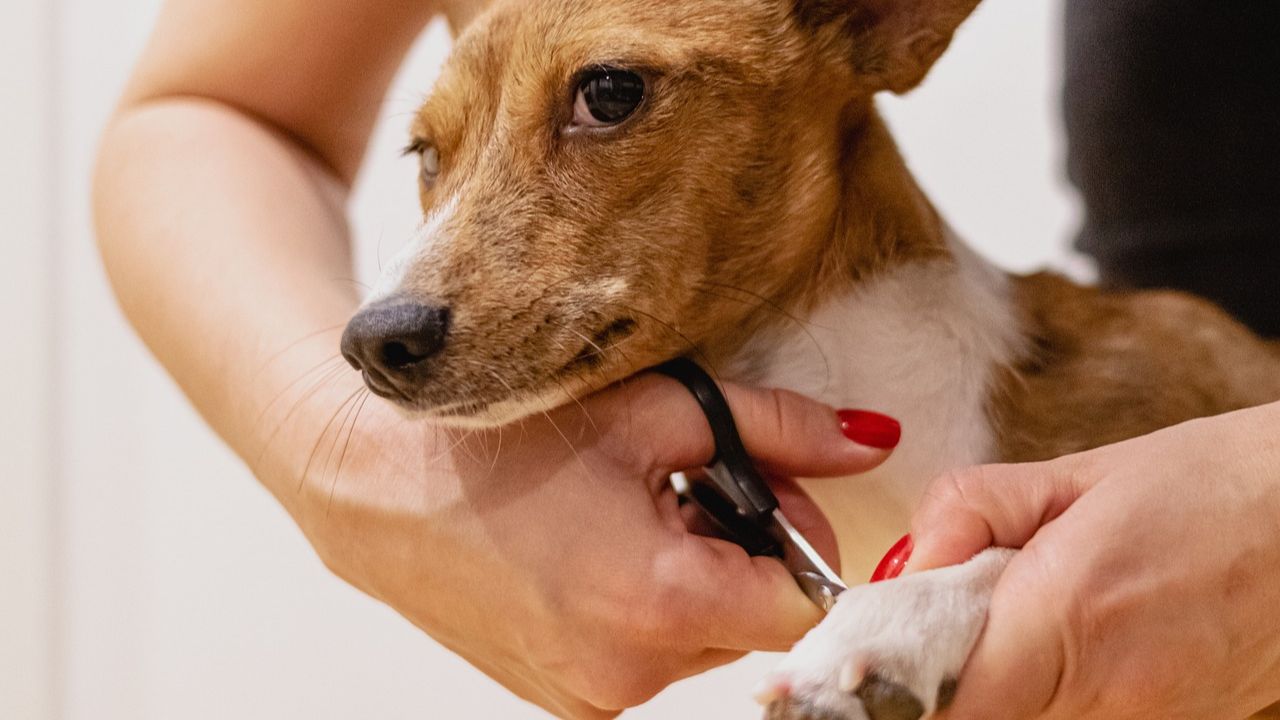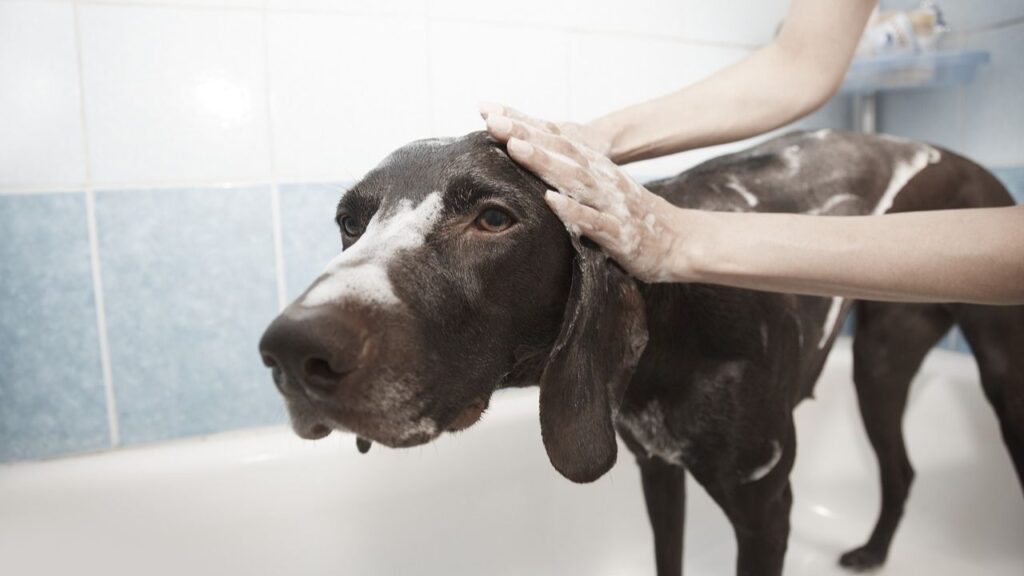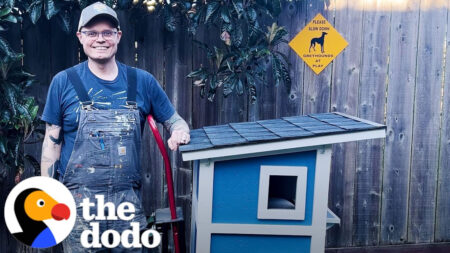Ever wondered if grooming your dog at home is really the best option? You’re not alone! Many pet owners ask themselves: “Is grooming my dog at home safe? Can I do it right without stressing out my pup?” The truth is, grooming your dog at home can be a rewarding experience for both you and your furry friend if done properly. It not only saves you the hassle of visiting a groomer but also allows you to be in complete control of the products used and the pace of the session. But like any new task, it’s easy to make a few mistakes along the way, especially if you’re unsure where to start.
So, how do you ensure that your dog is comfortable, safe, and looking its best throughout the process? It’s all about knowing the right techniques, right tools, and taking your time. While grooming may seem straightforward, there are a few key do’s and don’ts that can make the experience enjoyable rather than stressful.
Whether you’re trying to brush out matted fur, trim nails, or give them a nice bath, being aware of these tips can help create a calm and positive grooming routine for both you and your dog. Let’s dive in and explore the essential do’s and don’ts that will keep your pup feeling pampered and loved during their at-home grooming sessions.
Do’s of Dog Grooming at Home
Groom Regularly
Just like you wouldn’t let your hair grow wild and untamed for months, your dog’s coat requires regular maintenance, too. For dogs with long hair or double coats, grooming is essential to prevent mats, tangles, and skin issues. Even short-haired breeds benefit from regular brushing to keep their coat shiny and free of loose hair.
Don’t forget those nails, either. Overgrown nails can cause discomfort and even joint problems in the long run. Schedule regular grooming sessions – once a week for some breeds, or as needed for others – to keep your dog healthy and happy.
Stay Calm and Be Patient
Dogs are incredibly intuitive and can easily sense your stress. If you’re feeling anxious or rushed, your dog will pick up on it and that can make grooming even harder. Instead, take a deep breath and give yourself plenty of time for the session. Be patient and gentle, especially if your dog is nervous about grooming.
Watch for signs of stress like trembling, whining, or excessive panting, and take a break if necessary. A calm, relaxed attitude will help your dog feel more at ease and encourage them to cooperate.
Create a Safe, Comfortable Environment
Where you groom your dog matters. Choose a clean, well-lit space with a non-slip surface to avoid any accidents. A bathroom or kitchen counter can work well, or a dedicated grooming mat or towel can help your dog feel secure.
Avoid tethering your dog while grooming, as this could lead to unnecessary stress or injury. And if your dog enjoys being brushed, make it a regular, enjoyable part of your routine – brush them after a walk or as a treat to end a grooming session.
Use the Right Grooming Tools
Not all brushes, clippers, or grooming products are created equal. Choose tools that are designed for your dog’s coat type, whether it’s fine, thick, curly, or straight. For example, long-haired breeds might need a wide-tooth comb or slicker brush to prevent tangling, while short-haired dogs may benefit from a bristle brush.
Always use high-quality, well-maintained grooming tools to make the process smooth and safe. Dull clippers or worn-out brushes can hurt your dog and make grooming more stressful for both of you.
Also Read: Ten Best Dog Grooming Kits on Amazon
Pay Special Attention to Long-Haired Breeds
If your dog has long hair or a double coat, grooming is more than just a weekly brush-through. These breeds require regular trimming, especially around the ears, paws, and underbelly, to prevent painful mats. If left unchecked, mats can cause skin irritation or even infection. Make sure to check the fur around the ears, in the armpits, and between the paws – these areas are most likely to mat if not groomed regularly.
Know When to Ask for Help
Sometimes, despite your best efforts, your dog might just not cooperate. If nail trimming or brushing is too stressful for both of you or if you’re not confident in your ability to handle certain grooming tasks, don’t hesitate to reach out for help.
You can always ask a friend or family member to hold your dog while you trim nails or brush their coat. Alternatively, talk to your veterinarian or a professional groomer for tips, or even ask them to demonstrate how to groom your dog safely.
Don’ts of Dog Grooming at Home
Don’t Rush the Process
Just as you wouldn’t rush through your beauty routine, don’t rush your dog’s grooming session. Rushed grooming can lead to mistakes, such as accidentally cutting into the quick of your dog’s nails or pulling on a mat too harshly. Take your time, especially with anxious dogs. Doing a little bit at a time and taking breaks will reduce stress for both of you.
Don’t Use Forceful Restraint
We’ve all heard of people trying to hold down a squirming dog by gripping their fur, but this is a big no-no. Not only is this painful for your dog, but it can also lead to accidents. If your dog isn’t cooperating, gently try to calm them down with treats or praise, but never use force. If your dog still resists, it might be time to take a step back and come back to it another day or seek professional help.

Don’t Use Scented or Harsh Shampoo
Your dog’s skin is much more sensitive than yours, and scented or chemical-laden shampoos can irritate their skin or even cause an allergic reaction. Stick to unscented, dog-specific shampoos, and avoid human products altogether. If your dog has sensitive skin, consult with your vet for recommendations on hypoallergenic products.
Also Read: 20+ Christmas Gift Ideas for Pet Lovers
Don’t Bathe Your Dog Too Often
Bathing your dog too frequently strips their coat of its natural oils, which can lead to dry skin, itching, or other skin problems. Only bathe your dog when necessary – typically when they’ve rolled in something smelly, gotten muddy, or after a long summer hike. And be sure to dry them off completely afterward; wet fur in cold weather can cause your dog to get chilled.
Don’t Try to Do Everything in One Sitting
It can be tempting to tackle all aspects of grooming – bath, nail trim, brushing, ear cleaning, and teeth brushing – in one go, but that’s usually too much for both you and your dog. Instead, break the tasks into manageable chunks. You can do the nails one day, the bath another, and the brushing on yet another day. This will make grooming a much more pleasant experience for your dog and less overwhelming for you.
Don’t Cut Nails Too Short
Cutting your dog’s nails too short is painful and can lead to bleeding, which will only make your dog more fearful of the process. When cutting your dog’s nails, aim to trim only the tip, avoiding the quick, which is the sensitive part of the nail.
If you’re unsure, ask your veterinarian to show you how to trim your dog’s nails safely. And if you’re nervous about doing it yourself, it’s always better to ask for professional help rather than risk causing your dog pain.
Don’t Neglect the Grooming Tools
Sharp, clean tools are a must for safe grooming. If your nail clippers are dull or your brush is caked in old fur, it can make grooming uncomfortable for your dog. Regularly clean your tools and replace them as needed. A dull clipper can cause pain and stress to your dog, which could lead to them refusing to cooperate next time.
Don’t Forget to Clean Ears and Teeth
A dog’s grooming routine isn’t just about their coat. Regular ear cleaning and tooth brushing are vital for your dog’s overall health. Dirty ears can lead to infections, while plaque and tartar buildup on teeth can cause gum disease. Be sure to check your dog’s ears frequently and clean them as needed, and brush their teeth regularly with dog-safe toothpaste.
Also Read: Groopet Grooming Kit Features 11-in-1 Pet Salon at Home
Final Thoughts
Grooming your dog at home can be a rewarding experience that deepens your bond, but only if you do it safely and thoughtfully. By following these simple do’s and don’ts, you’ll be able to keep your dog looking and feeling their best while maintaining a stress-free grooming routine.
And remember, when in doubt, don’t hesitate to seek advice from your vet or a professional groomer. Your dog’s well-being is always the top priority. Happy grooming!
FAQs About Dog Grooming
Q. How often should I groom my dog?
A. The frequency of grooming depends on your dog’s breed, coat type, and activity level. Long-haired breeds or dogs with thick coats, like Poodles or Shih Tzus, may need grooming every 4-6 weeks. Short-haired dogs, like Beagles or Dachshunds, may only need grooming once a month. Regular brushing between grooming sessions is important to prevent mats and tangles.
Q. Can I groom my dog myself, or should I take them to a professional groomer?
A. You can absolutely groom your dog at home. Many owners choose at-home grooming for convenience and bonding time. Basic grooming tasks like brushing, bathing, and nail trimming can be done at home. However, if your dog has a complex coat or you’re not confident with trimming, it might be worth seeking help from a professional groomer for more delicate tasks like haircuts or de-matting.
Q. How do I trim my dog’s nails safely?
A. Trimming your dog’s nails is an essential part of grooming, but it can be tricky if you’re not used to it. Be sure to use dog-specific nail clippers and avoid cutting too close to the quick, which can cause bleeding and pain. If you’re unsure, start by trimming just the tip of the nail, and use a nail grinder or file for smoother results. Always reward your dog with praise or treats to create a positive association.
Q. How do I keep my dog calm during grooming?
A. Dogs can sense your emotions, so it’s important to stay calm and patient. Make grooming sessions short and positive by giving your dog plenty of breaks, treats, and praise. If your dog is anxious, consider playing calming music, using calming sprays, or offering chew toys to distract them. Grooming should never feel like a punishment – always reward your dog for being cooperative.
Q. How often can I bathe my dog?
A. Bathing your dog too often can strip their coat of natural oils, leading to dry, irritated skin. Generally, dogs should only be bathed when they are visibly dirty, smelly, or have rolled in something unpleasant. If your dog has a skin condition, your vet can guide you on an appropriate bathing schedule. Make sure to use a gentle, dog-specific shampoo to avoid irritation.
Q. What tools do I need for grooming my dog?
A. The essential grooming tools include a good-quality brush (appropriate for your dog’s coat type), dog nail clippers or a nail grinder, dog-safe shampoo, and a towel or blow dryer for drying. For dogs with longer or thicker fur, you might also need de-matting tools or a professional-grade trimmer. Always ensure that the tools you use are safe and designed for dogs to avoid injury.
Q. How do I prevent matting in my dog’s fur?
A. Matting is common in long-haired breeds. Regular brushing is key to preventing mats and tangles. For more severe tangles, use a de-matting comb or a detangling spray designed for dogs. In cases of very tight mats, you may need to carefully cut them out using scissors. If you’re unsure how to handle mats, consult a groomer to avoid hurting your dog.
Q. What if my dog doesn’t like being groomed?
A. If your dog resists grooming, take things slowly. Start with short sessions, focusing on one task at a time (like brushing or nail trimming), and gradually build their tolerance. Make sure to offer lots of praise and treats during and after the session. Some dogs may need professional help if grooming is too stressful, so don’t hesitate to reach out to a vet or groomer for advice.
Q. How can I keep my dog’s ears clean?
A. Regular ear cleaning is important, especially for breeds with floppy ears. Use a dog-safe ear cleaner and a cotton ball or gauze to gently wipe the outer part of the ear. Avoid using cotton swabs inside the ear canal, as this can cause injury or push debris further in. If you notice signs of infection, such as redness, swelling, or discharge, consult your vet.
Q. What should I do if I accidentally cut my dog’s skin or nail too short?
A. Accidents happen! If you accidentally cut your dog’s skin or nail too short, apply gentle pressure to stop the bleeding. For nails, styptic powder or cornstarch can help. If the bleeding doesn’t stop within a few minutes, or if your dog appears to be in pain, consult your veterinarian for further advice.
Q. How do I handle grooming a senior or ill dog?
A. Grooming senior or ill dogs requires extra care and patience. If your dog is having trouble standing for grooming, try to make them as comfortable as possible by grooming them on a soft surface like a bed or blanket. Be gentle and avoid overexerting them. If your dog is in pain or has mobility issues, ask your vet for advice on how to groom them safely at home.
Follow Homecrux on Google News!




